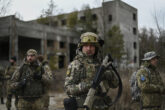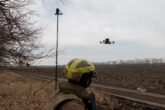February 15, 2021
Short-Term Action Items for Lloyd Austin's Pentagon
The Pentagon has elephantine inertia. Its size, the complexity of its missions, and the lead times of its processes combine to shrug off attempts to alter its trajectory. For a new administration, such as Defense Secretary Lloyd Austin and the initial cadre of political appointees at the Defense Department, four years can seem like ample time to wrestle the bureaucracy into compliance with its priorities. In reality, time is short, and the experienced hands that the Biden administration has tapped to lead the Pentagon know this. They will have to act quickly in key areas to respond to near-term demands, and to set changes in motion that will pay off in years to come. Striking a balance between dealing with urgent issues while beginning immediate work on desperately needed long-term structural reforms will be the overarching challenge for this team. Despite their different time horizons, both sets of activities must start today, so I propose the following brief “to-do” list for the Biden team to begin pushing the Pentagon in its preferred direction.
Striking a balance between dealing with urgent issues while beginning immediate work on desperately needed long-term structural reforms will be the overarching challenge for this team.
Dealing with the Elephants in the Room
There are two massive, urgent issues that Austin and his team are already dealing with: COVID-19 and cultural issues in the ranks. Regarding the former, the Biden plan envisions much greater Defense Department, and particularly National Guard, participation in supporting vaccination efforts. Given the Pentagon’s resources, planning and logistical capabilities, and can-do attitude, it would not be surprising to see the Defense Department’s role in the COVID-19 response grow over time. Austin and military leadership should make it clear to the White House and Congress that, while ready to support civil authorities as needed, the Defense Department should not be a substitute for a properly resourced public health sector. Internally, Pentagon leaders should be careful not to overcorrect for the debacle that was the U.S. government’s COVID-19 response by making public health and pandemic responses a key part of the next National Defense Strategy or its force-planning construct. Doing so might seem prudent today, but Pentagon leaders should keep in mind how this would continue militarizing properly civilian functions and distort the joint force’s mission set and priorities, likely without creating any meaningful change in its ability to respond to this sort of crisis. Instead, services and components will use these new demand signals to protect their budgets, end strength, and force structure, thereby hampering needed efforts to make the joint force more capable of deterring conflict with China or Russia.
Read the full article from War on the Rocks.
More from CNAS
-
Defense / Transatlantic Security
When Defense Becomes Destruction: Austria-Hungary’s Mistake and Ukraine’s RiskThis article was originally posted on War on the Rocks. The southeastern Polish city of Przemyśl, with its elegant 19th century Habsburg-era train station, remains one of the ...
By Franz-Stefan Gady
-
Defense / Transatlantic Security
Ukraine’s Catch-22 MomentThis article was originally published in the Financial Times. In Joseph Heller’s wartime classic, Catch-22, the protagonist Yossarian seeks out the US army surgeon Doc Daneeka...
By Franz-Stefan Gady
-
CNAS Insights | Budgetary Own Goals Undermine “Speed and Volume”
On November 7, Secretary of Defense Pete Hegseth laid out a plan to overhaul the Department of Defense’s (DOD’s) acquisition system. Placing an emphasis on delivering new capa...
By Philip Sheers, Carlton Haelig & Stacie Pettyjohn
-
Drones: Who Is Making the New Weapons of War?
From Ukraine and Russia to Gaza and Sudan, drones have become a key weapon of war. Which companies are making them, and profiting from this rapidly expanding but controversial...
By Stacie Pettyjohn




